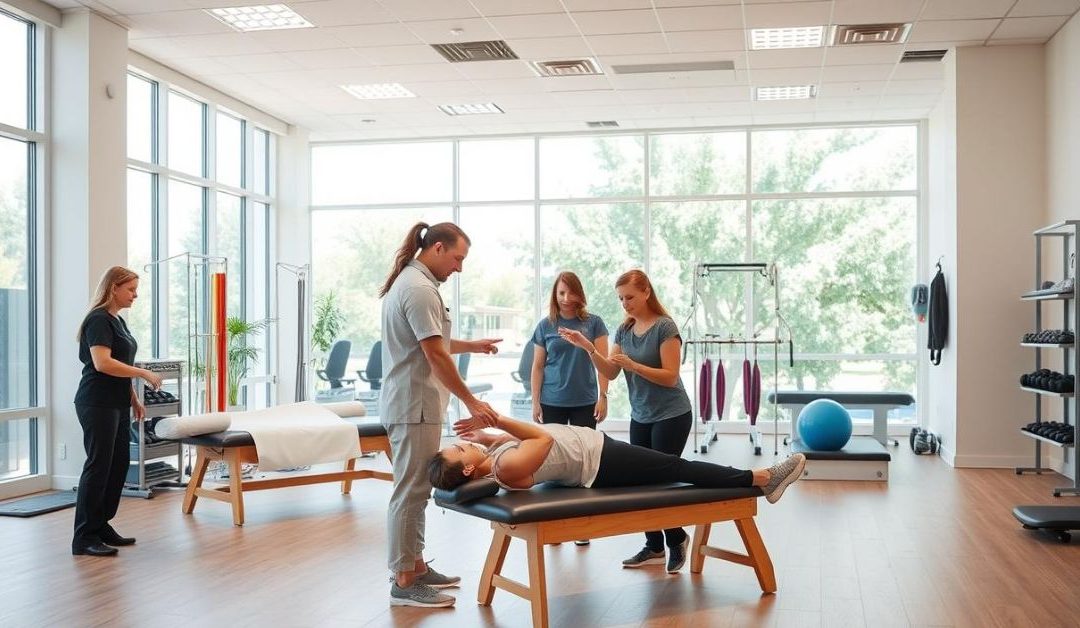Performance physical therapy matters because most people wait until they’re hurt to take their body seriously. That’s the problem. You push through discomfort, ignore small warning signs, and only slow down when something forces you to. A tight hamstring, a sore shoulder, a knee that swells after every run. At first, it’s manageable. Then it holds you back.
If you’ve been stuck in a cycle of pain, setbacks, or slow progress, keep reading. You’ll see how performance physical therapy makes all the difference.
KEYPOINTS
- Performance physical therapy improves how your body moves. It corrects the root causes of pain, builds sport-specific strength, and helps you train with control and confidence.
- Anyone who trains consistently can benefit from performance physical therapy. It prevents injuries, improves recovery, and supports long-term performance.
What Is Performance Physical Therapy?
Performance physical therapy is a training-based approach to rehab that helps you move better, train harder, and prevent future injuries. It’s built for people who want more than just basic recovery. Instead of just getting you back to walking or sitting without pain, it helps you build strength, fix movement issues, and raise your capacity to perform.
Experts in the field explain that most physical therapy only restores people to their baseline. Performance physical therapy goes further by improving how well your body functions during real movement, not just how well it recovers.
You don’t need to be a pro athlete to benefit from this. If you run, lift, play, or just want to stay active without pain, performance physical therapy gives you the structure and support to do it better.
How Can Performance Physical Therapy Improve Athletic Performance?
Your body can only perform as well as it moves. If your joints are stiff, your muscles are imbalanced, or your form breaks down under pressure, your performance suffers. Most training plans don’t fix those problems. Performance physical therapy does. Here’s how:
1. Prevents injuries before they start
Tight hips, stiff ankles, and weak glutes shift stress to places that can’t handle it. Small issues build up until they become real problems. Movement screening helps catch those patterns early. Fixing them improves how your joints and muscles work together. For example, better hip and ankle mobility reduces pressure on the knees during squats and running.
2. Builds strength that carries over to sport
Strength only matters if it shows up when you need it. You need power in the right positions, under control, and through a full range. Performance physical therapy targets movement patterns instead of just isolated muscles. As a result, your strength becomes useful. Glute activation and core control, for example, improve speed and stability in sprints and direction changes.
3. Restores clean movement after injury
Pain changes how you move. Even when it’s gone, the habits stick. You end up compensating, which leads to stiffness, fatigue, or new injuries. Performance physical therapy resets those patterns so you move freely again. Regaining shoulder blade control brings back full strength overhead and keeps pressing motions smooth and pain-free.
4. Speeds up recovery between sessions
The better your body moves, the less stress it builds up. That means faster recovery and fewer training disruptions. Good movement saves energy and limits soreness. With improved posture and trunk control, your body handles more work without needing extra rest days to bounce back.
5. Builds confidence in your movement
You can’t perform your best if you’re holding back. Uncertainty leads to hesitation, and that slows everything down. Performance physical therapy gives you the control and balance your body needs to move with power and precision. Strong ankle stability, for example, restores confidence in quick direction changes and explosive lifts.
Who Can Benefit from Performance Physical Therapy
You don’t need to be a pro athlete to train like one. Performance physical therapy is built for anyone who moves hard, trains consistently, or wants to stay active without getting sidelined.
If you’re lifting, running, playing, or competing regularly, your body is taking on repetitive stress. Even if you feel fine now, that stress adds up. Tightness shows up. Form breaks down. Pain creeps in. Performance physical therapy helps you stay ahead of that.
This approach works well for:
- Athletes recovering from injury who don’t just want to return, but want to come back stronger
- Lifters and CrossFitters who hit plateaus or struggle with recurring joint pain during key lifts
- Runners and endurance athletes dealing with movement imbalances, fatigue, or joint overload
- Recreational athletes who still train hard and want to avoid the stop-start cycle of injury
- Anyone who wants to move better and feel stronger in their training, sport, or everyday life
Build a Body That Performs
Training hard only gets you so far. If your body can’t move well, it won’t perform well. That’s where performance physical therapy makes a real difference. It targets the weak spots, corrects movement problems, and helps you build strength that holds up under pressure.
Motion Rx works with athletes and active individuals who want real results. You get focused, one-on-one care designed to match how you train and what you need.
Book your first visit with Motion Rx and start moving stronger, faster, and more efficiently, without pain getting in the way.
FAQs
1. What’s the difference between performance physical therapy and personal training?
Personal training focuses on general fitness. Performance physical therapy identifies and fixes movement problems so you can train harder, safer, and with less risk of injury.
2. What should I expect during my first visit?
You’ll get a full movement evaluation, a review of your training and injury history, and a personalized plan to address any issues or performance goals.
3. What should I wear to my session?
Wear athletic clothes you can move in, something you’d normally train in. That makes it easier for us to assess your movement and get right into the work
4. How long is each session?
Each appointment lasts around 60 minutes and is entirely one-on-one with your physical therapist. You’ll get full attention, real feedback, and a plan built around your sport or training.



